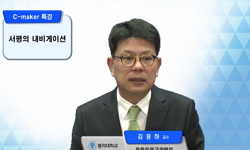목적: 전자기장 네비게이션 시스템을 이용한 슬관절 전치환술과 고식적 방식을 이용한 전치환술 후 8-10년간 추시 가능하였던 환자들에서 임상적 및 방사선적 결과를 비교 분석하고자 하였...
http://chineseinput.net/에서 pinyin(병음)방식으로 중국어를 변환할 수 있습니다.
변환된 중국어를 복사하여 사용하시면 됩니다.
- 中文 을 입력하시려면 zhongwen을 입력하시고 space를누르시면됩니다.
- 北京 을 입력하시려면 beijing을 입력하시고 space를 누르시면 됩니다.
https://www.riss.kr/link?id=A105408217
- 저자
- 발행기관
- 학술지명
- 권호사항
-
발행연도
2018
-
작성언어
Korean
- 주제어
-
등재정보
KCI등재
-
자료형태
학술저널
- 발행기관 URL
-
수록면
226-233(8쪽)
-
KCI 피인용횟수
0
- DOI식별코드
- 제공처
- 소장기관
-
0
상세조회 -
0
다운로드
부가정보
국문 초록 (Abstract)
대상 및 방법: 2004년 2월부터 2006년 12월까지 슬관절 전치환술을 시행 받은 후 8-10년 이상 추시가 가능하였던 환자 32명 40예 슬관절을 대상으로 각각 네비게이션군, 고식적 군으로 나누어 술 전 및 최종 추시 시의 관절 가동 각도, 슬관절 점수 및 기능 점수를 측정하였고 비교 대조하여 분석하였다. 또한 같은 시기의 대퇴골 치환물의 외반각(α), 굴곡각(γ) 및 경골 치환물의 내반각(β), 후방 경사각(δ)을 측정하여 삽입물의 정렬을 비교하였다.
결과: 네비게이션군에서 평균 운동 범위는 최종 추시 시 121.8°±16.3° (92°-140°)로 호전되었고, Western Ontario McMaster Universities osteoarthritis Index (WOMAC) score는 89.8±5.4점으로, Knee Society score (KSS)는 91.5±7.5점으로 각각 향상되었다. 고식적 군에서 평균 운동 범위는 최종 추시 시 112.6°±25.6° (60°-140°)로 측정되었다. WOMAC score는 84.2±10.6점, KSS는 81.1±14.3점으로 각각 향상되었다. 삽입물의 외반각(α), 내반각(β), 굴곡각(γ), 후방 경사각(δ)은 두 군 모두에서 수술 직후에 비하여 최종 추시 시까지 유의한 변화를 보이지 않았다. 두 군의 비교에 있어서는 평균 운동 범위(p=0.018)와 KSS (p=0.038)만이 네비게이션군에서 고식적 군에 비하여 통계적으로 유의하게 좋은 결과를 보였다.
결론: 네비게이션을 이용한 슬관절 전치환술을 시행한 군에서 8-10년 추시결과 관절 운동 범위와 KSS가 고식적 군에 비해 유의하게 높았다. 그러나 술 전 및 술 후 대비 최종 추시 시 지표들의 변화량은 KSS를 제외하고는 고식적 군과 유의 차한이를 보이지 않았다.
목적: 전자기장 네비게이션 시스템을 이용한 슬관절 전치환술과 고식적 방식을 이용한 전치환술 후 8-10년간 추시 가능하였던 환자들에서 임상적 및 방사선적 결과를 비교 분석하고자 하였다.
대상 및 방법: 2004년 2월부터 2006년 12월까지 슬관절 전치환술을 시행 받은 후 8-10년 이상 추시가 가능하였던 환자 32명 40예 슬관절을 대상으로 각각 네비게이션군, 고식적 군으로 나누어 술 전 및 최종 추시 시의 관절 가동 각도, 슬관절 점수 및 기능 점수를 측정하였고 비교 대조하여 분석하였다. 또한 같은 시기의 대퇴골 치환물의 외반각(α), 굴곡각(γ) 및 경골 치환물의 내반각(β), 후방 경사각(δ)을 측정하여 삽입물의 정렬을 비교하였다.
결과: 네비게이션군에서 평균 운동 범위는 최종 추시 시 121.8°±16.3° (92°-140°)로 호전되었고, Western Ontario McMaster Universities osteoarthritis Index (WOMAC) score는 89.8±5.4점으로, Knee Society score (KSS)는 91.5±7.5점으로 각각 향상되었다. 고식적 군에서 평균 운동 범위는 최종 추시 시 112.6°±25.6° (60°-140°)로 측정되었다. WOMAC score는 84.2±10.6점, KSS는 81.1±14.3점으로 각각 향상되었다. 삽입물의 외반각(α), 내반각(β), 굴곡각(γ), 후방 경사각(δ)은 두 군 모두에서 수술 직후에 비하여 최종 추시 시까지 유의한 변화를 보이지 않았다. 두 군의 비교에 있어서는 평균 운동 범위(p=0.018)와 KSS (p=0.038)만이 네비게이션군에서 고식적 군에 비하여 통계적으로 유의하게 좋은 결과를 보였다.
결론: 네비게이션을 이용한 슬관절 전치환술을 시행한 군에서 8-10년 추시결과 관절 운동 범위와 KSS가 고식적 군에 비해 유의하게 높았다. 그러나 술 전 및 술 후 대비 최종 추시 시 지표들의 변화량은 KSS를 제외하고는 고식적 군과 유의 차한이를 보이지 않았다.
다국어 초록 (Multilingual Abstract)
Materials and Methods: A retrospective review of was performed on 32 patients (40 knees) who underwent total knee arthroplasty between February 2004 and December 2006 and were followed-up for 8 to 10 years. Mechanical axis deviation, range of motion, radiologic position of the implants, and subjective clinical scores were measured and compared between 20 navigation-assisted total knee arthroplasties and 20 conventional total knee arthoplasties. Change in the values (α, β, γ, and δ angles) from the immediate postoperative period to the last follow-up were also calculated and compared between the two groups.
Results: The mean range of motion in the navigation group was improved to 121.8°±16.3° (92°–140°) at the last follow-up, and the Western Ontario McMaster Universities osteoarthritis Index (WOMAC) score was 89.8±5.4 and the Knee Society score (KSS) was 91.5±7.5. The mean range of motion in the conventional group was 112.6°±25.6° (60°–140°) at the last follow-up. The WOMAC score was 84.2±10.6, and the KSS was 81.1±14.3. The α, β, γ, and δ angles of the implants were not significantly changed until the last follow-up. In the comparison between the two groups, only the mean range of motion (p=0.018) and the KSS (p=0.038) showed statistically better results in the navigation group than the conventional group.
Conclusion: Navigation-assisted total knee arthroplasty showed better KSS and range of motion compared with the conventional group in a cross-sectional study with 8 to 10 years of follow-up results. However, only the KSS showed a significant difference between the two groups by the amount of changes in the clinical and radiological results.
Purpose: The purpose of this study was to compare the clinical and radiological results between patients who underwent total knee arthroplasty using the conventional method and the navigation-assisted method. Materials and Methods: A retrospective ...
Purpose: The purpose of this study was to compare the clinical and radiological results between patients who underwent total knee arthroplasty using the conventional method and the navigation-assisted method.
Materials and Methods: A retrospective review of was performed on 32 patients (40 knees) who underwent total knee arthroplasty between February 2004 and December 2006 and were followed-up for 8 to 10 years. Mechanical axis deviation, range of motion, radiologic position of the implants, and subjective clinical scores were measured and compared between 20 navigation-assisted total knee arthroplasties and 20 conventional total knee arthoplasties. Change in the values (α, β, γ, and δ angles) from the immediate postoperative period to the last follow-up were also calculated and compared between the two groups.
Results: The mean range of motion in the navigation group was improved to 121.8°±16.3° (92°–140°) at the last follow-up, and the Western Ontario McMaster Universities osteoarthritis Index (WOMAC) score was 89.8±5.4 and the Knee Society score (KSS) was 91.5±7.5. The mean range of motion in the conventional group was 112.6°±25.6° (60°–140°) at the last follow-up. The WOMAC score was 84.2±10.6, and the KSS was 81.1±14.3. The α, β, γ, and δ angles of the implants were not significantly changed until the last follow-up. In the comparison between the two groups, only the mean range of motion (p=0.018) and the KSS (p=0.038) showed statistically better results in the navigation group than the conventional group.
Conclusion: Navigation-assisted total knee arthroplasty showed better KSS and range of motion compared with the conventional group in a cross-sectional study with 8 to 10 years of follow-up results. However, only the KSS showed a significant difference between the two groups by the amount of changes in the clinical and radiological results.
참고문헌 (Reference)
1 Laskin RS, "Total knee arthroplasty using an uncemented, polyethylene tibial implant. A seven-year follow-up study" 288 : 270-276, 1993
2 Kim YH, "The clinical outcome of computer-navigated compared with conventional knee arthroplasty in the same patients: a prospective, randomized, double-blind, long-term study" 99 : 989-996, 2017
3 Ewald FC, "The Knee Society total knee arthroplasty roentgenographic evaluation and scoring system" 248 : 9-12, 1989
4 Matsuda S, "Posterior tibial slope in the normal and varus knee" 12 : 165-168, 1999
5 Mihalko WM, "Posterior cruciate ligament effects on the flexion space in total knee arthroplasty" 360 : 243-250, 1999
6 Seon JK, "Navigation-assisted less invasive total knee arthroplasty compared with conventional total knee arthroplasty: a randomized prospective trial" 21 : 777-782, 2006
7 Ishida K, "Mid-term outcomes of computer-assisted total knee arthroplasty" 19 : 1107-1112, 2011
8 Decking R, "Leg axis after computer-navigated total knee arthroplasty: a prospective randomized trial comparing computer-navigated and manual implantation" 20 : 282-288, 2005
9 Matsumoto T, "Joint gap kinematics in posterior-stabilized total knee arthroplasty measured by a new tensor with the navigation system" 128 : 867-871, 2006
10 Clemens U, "Experience using the latest Ortho-Pilot TKA software: a comparative study" 11 : 265-273, 2003
1 Laskin RS, "Total knee arthroplasty using an uncemented, polyethylene tibial implant. A seven-year follow-up study" 288 : 270-276, 1993
2 Kim YH, "The clinical outcome of computer-navigated compared with conventional knee arthroplasty in the same patients: a prospective, randomized, double-blind, long-term study" 99 : 989-996, 2017
3 Ewald FC, "The Knee Society total knee arthroplasty roentgenographic evaluation and scoring system" 248 : 9-12, 1989
4 Matsuda S, "Posterior tibial slope in the normal and varus knee" 12 : 165-168, 1999
5 Mihalko WM, "Posterior cruciate ligament effects on the flexion space in total knee arthroplasty" 360 : 243-250, 1999
6 Seon JK, "Navigation-assisted less invasive total knee arthroplasty compared with conventional total knee arthroplasty: a randomized prospective trial" 21 : 777-782, 2006
7 Ishida K, "Mid-term outcomes of computer-assisted total knee arthroplasty" 19 : 1107-1112, 2011
8 Decking R, "Leg axis after computer-navigated total knee arthroplasty: a prospective randomized trial comparing computer-navigated and manual implantation" 20 : 282-288, 2005
9 Matsumoto T, "Joint gap kinematics in posterior-stabilized total knee arthroplasty measured by a new tensor with the navigation system" 128 : 867-871, 2006
10 Clemens U, "Experience using the latest Ortho-Pilot TKA software: a comparative study" 11 : 265-273, 2003
11 Bai B, "Effect of posterior cut angle on tibial component loading" 15 : 916-920, 2000
12 Kamat YD, "Does computer navigation in total knee arthroplasty improve patient outcome at midterm follow-up?" 33 : 1567-1570, 2009
13 Choong PF, "Does accurate anatomical alignment result in better function and quality of life? Comparing conventional and computer-assisted total knee arthroplasty" 24 : 560-569, 2009
14 Hamilton DF, "Dealing with the predicted increase in demand for revision total knee arthroplasty: challenges, risks and opportunities" 97 : 723-728, 2015
15 Stulberg SD, "Computer-assisted surgery versus manual total knee arthroplasty: a case-controlled study" 88 (88): 47-54, 2006
16 Saragaglia D, "Computer-assisted knee arthroplasty: comparison with a conventional procedure. Results of 50 cases in a prospective randomized study" 87 : 18-28, 2001
17 Anderson KC, "Computer assisted navigation in total knee arthroplasty: comparison with conventional methods" 20 : S132-S138, 2005
18 Andriacchi TP, "Biomechanics and gait analysis in total knee replacement" 17 : 470-473, 1988
19 Bathis H, "Alignment in total knee arthroplasty. A comparison of computer-assisted surgery with the conventional technique" 86 : 682-687, 2004
동일학술지(권/호) 다른 논문
-
- 대한정형외과학회
- 전상현(Sang Hyun Jeon)
- 2018
- KCI등재
-
- 대한정형외과학회
- 이정우(Jung Woo Lee)
- 2018
- KCI등재
-
- 대한정형외과학회
- 송미현(Mi Hyun Song)
- 2018
- KCI등재
-
관절경하 회전근 개 봉합술 시 윤활낭 절제 정도에 따른 통증 및 파워 도플러 초음파 결과
- 대한정형외과학회
- 최창혁(Chang Hyuk Choi)
- 2018
- KCI등재
분석정보
인용정보 인용지수 설명보기
학술지 이력
| 연월일 | 이력구분 | 이력상세 | 등재구분 |
|---|---|---|---|
| 2026 | 평가예정 | 재인증평가 신청대상 (재인증) | |
| 2020-04-14 | 학회명변경 | 영문명 : 미등록 -> The Korean Orthopaedic Association |  |
| 2020-01-01 | 평가 | 등재학술지 유지 (재인증) |  |
| 2017-01-01 | 평가 | 등재학술지 유지 (계속평가) |  |
| 2014-01-14 | 학술지명변경 | 외국어명 : 미등록 -> Journal of the Korean Orthopaedic Association |  |
| 2013-01-01 | 평가 | 등재학술지 유지 (등재유지) |  |
| 2010-01-01 | 평가 | 등재 1차 FAIL (등재유지) |  |
| 2008-01-01 | 평가 | 등재학술지 유지 (등재유지) |  |
| 2005-05-30 | 학술지등록 | 한글명 : 대한정형외과학회지외국어명 : 미등록 |  |
| 2005-01-01 | 평가 | 등재학술지 선정 (등재후보2차) |  |
| 2004-01-01 | 평가 | 등재후보 1차 PASS (등재후보1차) |  |
| 2002-07-01 | 평가 | 등재후보학술지 선정 (신규평가) |  |
학술지 인용정보
| 기준연도 | WOS-KCI 통합IF(2년) | KCIF(2년) | KCIF(3년) |
|---|---|---|---|
| 2016 | 0.06 | 0.06 | 0.08 |
| KCIF(4년) | KCIF(5년) | 중심성지수(3년) | 즉시성지수 |
| 0.08 | 0.08 | 0.24 | 0.01 |





 DBpia
DBpia







